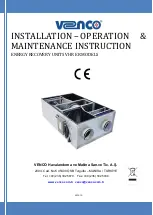
28
GALAXY 3000 GE MV VRD
EN
3.4. WELDING USING THE TIG PROCEDURE WITH MANUAL GAS CONTROL AND LIFT ARC.
This process, during which a non-consumable pure
or alloyed tungsten electrode is used, to conduct
the electrical current, uses an inert protection gas
to facilitate its transmission.
It can be used for welding any type of material
except for aluminium and magnesium. Its
application is not economical in thicknesses of
more than 8 mm. For higher ranges, we must use
other combined processes for filling passes.
The great advantage of this welding method is to
obtain more resistant and ductile beads, which are
also less sensitive to corrosion than the other
procedures, as the protective gas prevents contact
between the atmosphere and the melt bath. The
bead obtained therefore has a good surface finish,
which can be improved with simple finish
operations, which has a favourable impact on the
production costs.
Reduction of deformation or slag inclusions, as
well as clean and even welding, due to the
reduction of fumes and splashes, are other
advantages of this system.
The equipment will develop direct current in TIG
welding, having to use direct polarity, exclusively.
We will place the welding torch in negative pole
(“V”) and the ground clamp in positive pole (“T”).
Additionally, a bottle of gas ("W"), normally Argon,
should be located at the installation, which we will
connect to the machine through a pressure
regulator ("X"), as indicated in figure.
TIG LIFT-ARC MODE INSTALLATION.
MANUAL GAS CONTROL.
Welding process selector (C):
TIG MODE or purely descending. This working
mode is ideal for TIG welding as it includes a
soft striking system (LIFT-ARC).
In this working mode the electrode antisticking
system and the arc force system are annulled.
We will use a TIG torch with manual valve that we will connect directly to the pressure regulator with its gas
pipe “Y”).
















































